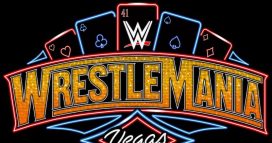Phillies
WHY YOUR KID’S NOT GETTING MY BALL
Baseball is full of time-honored traditions: the seventh inning stretch, the multivarious “unwritten rules,” the twelve-dollar beer. So many and so ingrained that we don’t even think much about them anymore. You shell out your twelve bucks for that warm Bud because, hey, you’re at the ballpark and that’s just what you do. It’s only when these traditions are violated that we get upset and throw tantrums because, hey, we’re at the ballpark and that’s what we do. You don’t bunt to break up a no-hitter and if you try you just might find yourself showered with those twelve-dollar beers when you take your place in the outfield in the bottom of the inning. Serves you right for violating one of baseball’s traditions.
The thing about traditions, though, is that they’re just that – traditions. Things that have taken place for so long that we can’t even remember when they began. But time flies nowadays. Decades used to be distinct cultural markers but ever since the turn of the 21st century we haven’t had the patience to let a ten-year span unfold and define us. Now we measure eras in months, weeks even. Remember what the world was like before the Johnny Depp-Amber Heard trial? Those were simpler times.
And so we find ourselves in a world where traditions sprout and cement themselves in record time. There once was a time when practically nobody went to a ballgame in team-branded gear. When was that – the 1890s? No, it was the 1990s, although it seems like forever ago.
Another tradition that seems like it has been around forever but which really hasn’t has been the one where the adult fan who catches a foul ball gives it to the kid sitting nearby. When I was a kid this almost never happened. Today it not only occurs several times a game, it has become a veritable tradition that is typically enforced through extreme social pressure whenever breached. At times it can get scary.
While I have no issue with any fan who wants to surrender their hard-won foul ball to a kid or anyone else, I find the social enforcement of this newfangled tradition unsettling, telling, and sad. And I want to explain – right now, so there will be no misunderstanding later – why I’m never giving your kid the ball I catch no matter what.
You see, as I remember it, going to a ballgame used to be easy. You bought your ticket; you went to the game. Maybe you bought a hot dog. And then you went home. Easy peasy. You were there to watch the performance, not be a part of it. It was relaxing. Even when your team got clobbered.
I’m not sure precisely when all of this changed but I think it was around the time the newly minted tradition of wearing team-branded merchandise to the games started overtaking the stands. Suddenly you were expected to not only attend the game but demonstrate your allegiance to this player or that one. By the dawn of the new century nearly everyone who attended a Major League game considered themselves part of the show: I’m a proponent of our free agent superstar; I’m backing the quirky role player; I respect our team’s history by peacocking about in my vintage throwback. Maybe Shakespeare had Guaranteed Rate Field in Chicago in mind when he wrote that All the World’s a Stage. Well, at least the concourse.
All of this is a form of social signaling. While the variation of player names and numbers on the jerseys are a way of standing out, they are also a way of fitting in, of conforming. Of confirming to the thousands of others in the ballpark that you, too, are a comforting part of the norm. You aren’t an outlier. You aren’t a threat. You aren’t wearing a frigging Mets jersey at Citizens Bank Park.
After 9-11 the conformity cult spread to the pregame national anthem. Whereas for decades it was played to nearly empty and disinterested seating bowls while fans chatted each other up at the concessions stands while waiting for their hot dogs and beer (you could look it up), suddenly the anthem became a sacred ritual requiring all commerce, and chatter, to cease. Undivided attention needed to be paid. No longer could players mill around the clubhouse as they had for as long as anyone could remember, now they not only had to be in the dugout but on the top step where they could be seen by everyone – another method of enforcing the expected norm. Soft power, if you will.
Everyone was beseeched to stand and veterans implored to salute. Challenge the model and risk a punch in the mouth. The Yankees even tried to expel perceived dissenters from the stadium for having the audacity to visit the men’s room during the playing of God Bless America until the ACLU stepped in.
And now the thuggish cult of social conformity at the ballpark has infected the otherwise unexpected and thrilling occasion of catching a foul ball, transforming it into one of baseball’s newest traditions. Of course, for as long as baseball has deemed foul balls expendable there have been adults who have tossed their prizes in the direction of the nearest child. Not only is there nothing wrong with that, it can be a sweet gesture. But when the mob incessantly chants “Give it to the kid!” nearly every time a ball finds its way into the stands and isn’t immediately surrendered to the nearest toddler, what was once sweet turns menacing in a hurry.
You see, the fans chanting the loudest don’t really care if the kid actually gets the ball. They’re not worried that junior might go home empty-handed. (Most of the time junior wasn’t watching the game anyway.) No, they’re angry that a norm has been breached, that conformity has been challenged. That someone in their midst has broken from the herd. In a way, they’re frightened. Having internalized rule by the mob for so long they’re petrified by the threat posed by such acts of nonconformity. What could happen? So they enforce tradition, they enforce conformity. Really, these are just two words expressing similar ideas.
Breaking with tradition, with conformity, unsettles them. So they stand there, in their team-branded gear, shooting daggers at the perceived non-conformists at the ballpark when not openly taunting or yelling at them. For it is the non-conformist, the non-traditionalist, rather than the grey-outfitted team on the field, who is their true opponent.
The ballpark right now is America writ small. And it’s frightening.
And that’s why I’m never giving your kid a ball.





